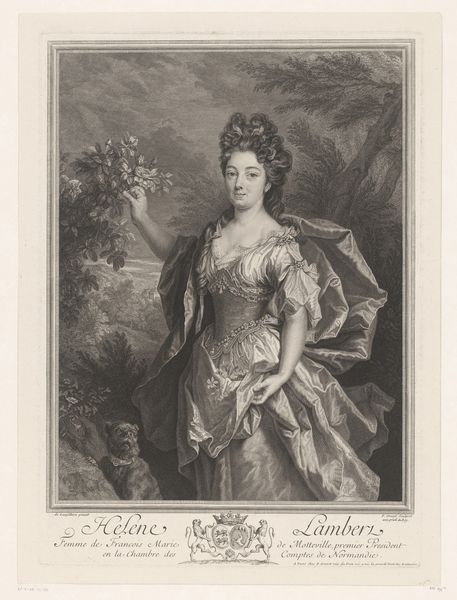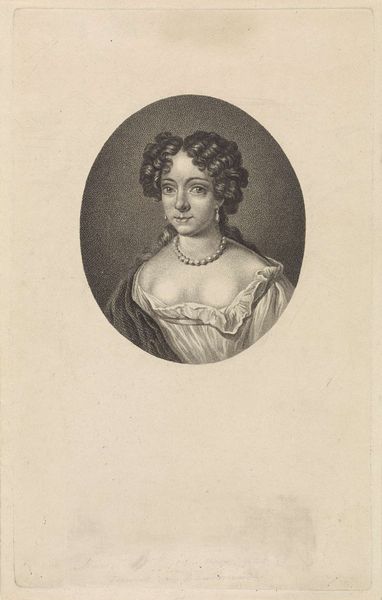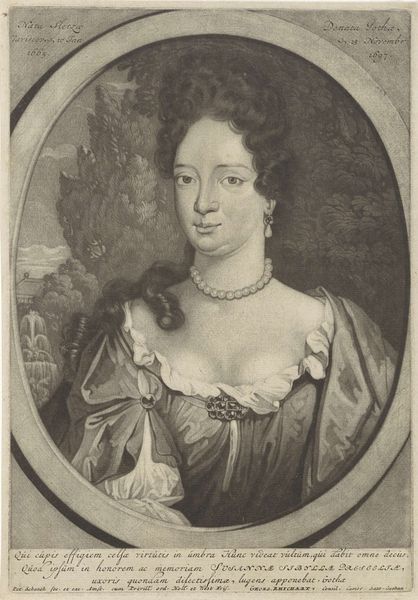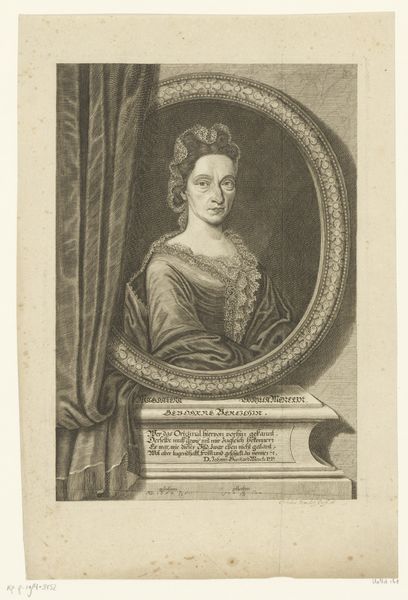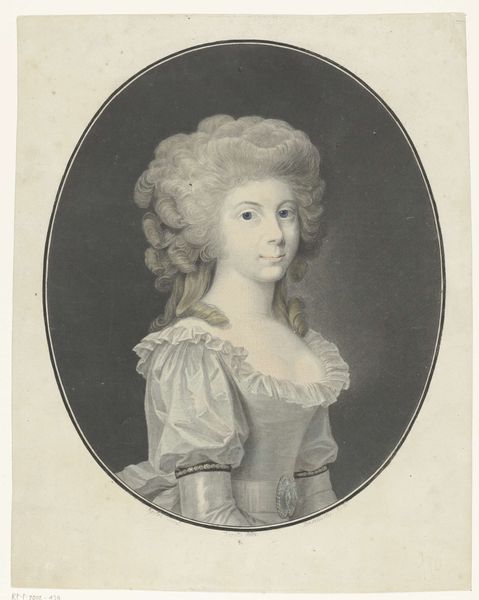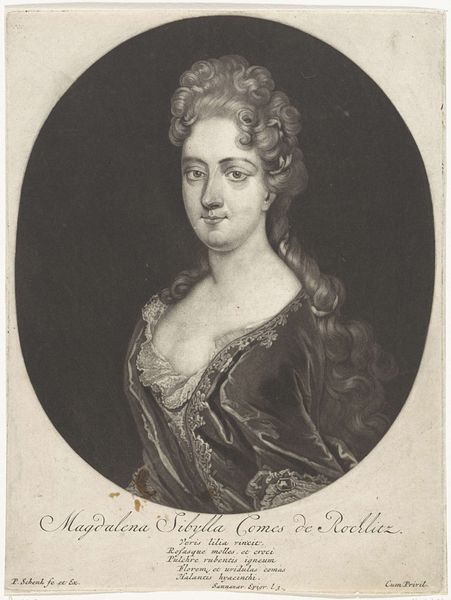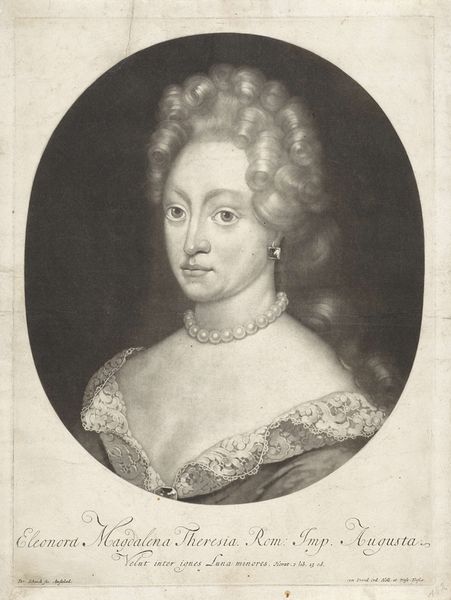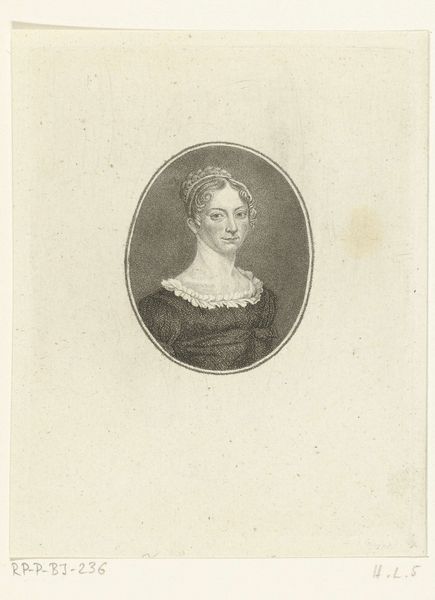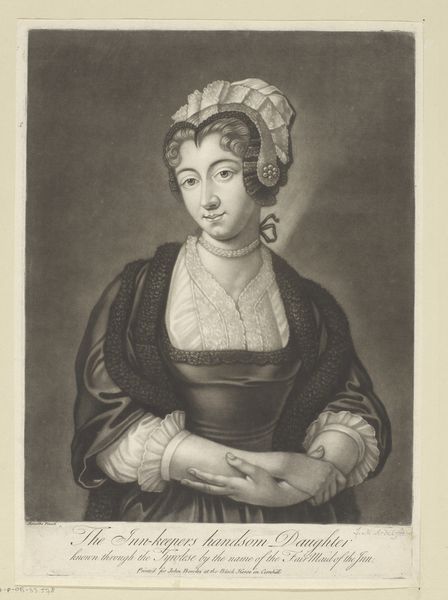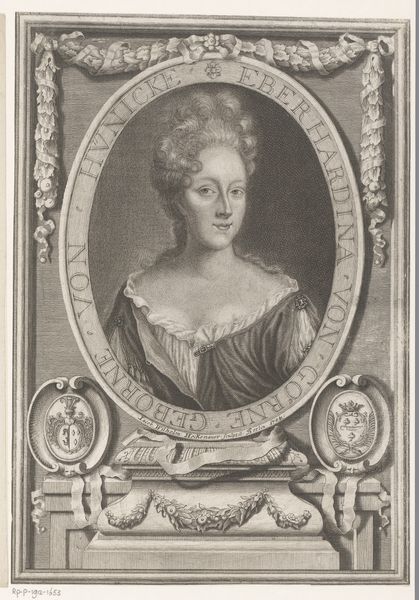
engraving
#
portrait
#
baroque
#
historical photography
#
history-painting
#
northern-renaissance
#
engraving
Dimensions: height 255 mm, width 176 mm
Copyright: Rijks Museum: Open Domain
Curator: Here we have Pieter Schenk’s "Portret van Susanna Sibylla Reichardt," crafted around 1697-1698, and held here at the Rijksmuseum. It’s an engraving. Editor: It has this poised formality characteristic of baroque portraiture, yet I find the subject's eyes quite gentle, even vulnerable. It softens the inherent rigidity of the oval frame. Curator: Precisely. That oval framing, almost like a cameo, situates her within a tradition of idealized beauty. It reminds us how portraits like this played a crucial role in constructing and circulating elite identities during that period. Schenk masterfully captured her social standing, but it also suggests the subject’s character and soul. Editor: Engraving, especially portrait engravings, functioned much like a photograph does now. They spread her image to those who couldn't encounter her in person. And I wonder how conscious she was of the performative aspect of this representation? Curator: Well, symbols of status were meticulously chosen—the fabric, her hairstyle—they were meant to convey very specific meanings, to project power and legitimacy. Beyond merely documenting likeness, this image projects a carefully cultivated identity into a wider, potentially powerful social sphere. We cannot underestimate how these portraits impacted viewers' perceptions of authority, too. The baroque elements like a detailed hairstyle amplify Susanna’s rank within her immediate surroundings. Editor: The visual rhetoric is striking, for sure. Knowing she’s rendered in print also highlights its social reach, how these images reinforced hierarchical social structures and ideas about lineage at the time. She gazes outward in an invitational way but holds herself in a poised, upper class fashion. Curator: That’s the crux of the image. Schenk created a visual tool that worked to bolster social and familial ties for a public. It represents more than her features, rather a complex symbol of societal standards. Editor: Right. Looking at it this way underscores how artists like Schenk played a pivotal role not only in artistic circles, but in the public life of early modern Europe. Curator: Indeed. An exquisite example of how portraiture intersects with politics and self-representation. Editor: So true, thinking about art as part of the broader public sphere really does change my appreciation of such portrait engravings.
Comments
No comments
Be the first to comment and join the conversation on the ultimate creative platform.

